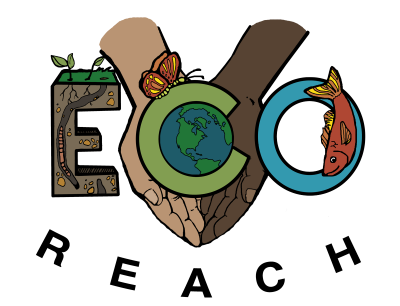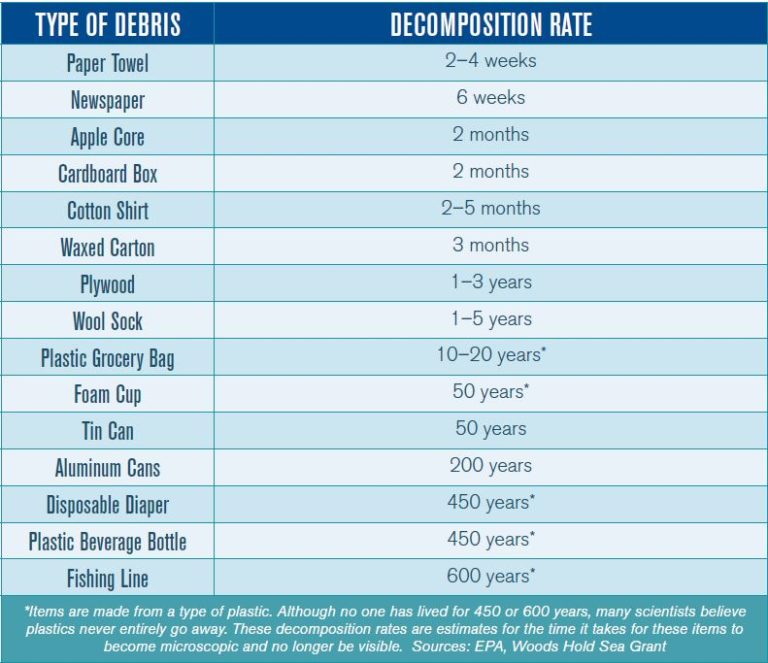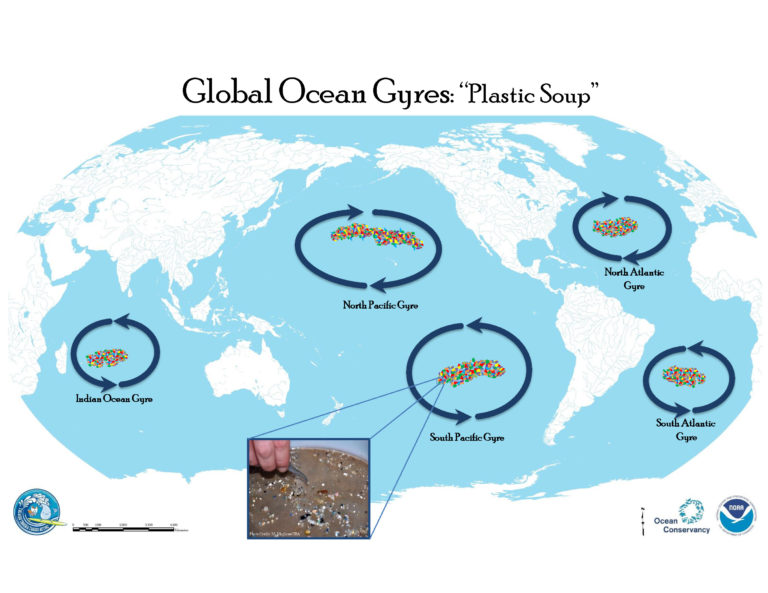Introduction:
Plastic pollution in the world’s oceans has become a widely-recognized problem for ecosystems worldwide, but especially for marine ecosystems. Plastic bottles, bags, and containers are just some examples of pollution that can be found in oceans. In many ways, plastic products are very helpful and necessary to people’s everyday lives. However, we can also consider how to use plastic items in ways that help sustain and protect our environment!
In this activity, you will examine how long it takes for items that we all use every day to degrade in the ocean.
Time Required:
15-20 minutes (depending on the number of items you choose )
Materials Needed:
- Different kinds of plastic items (water bottles, plastic bags, plastic shovels, empty food containers, etc.),
- A computer with internet access.
Optional Materials: Reusable items to show students, for example reusable bags, reusable straws, etc.
Activity Breakdown:
Plastic Pollution is meant to be in three parts, each part lasting around 5-7 minutes. The activity is centered around ocean pollution, plastics waste, and the dangers to marine-life surrounding plastics pollution.
Part 1: Plastic Breakdown
- Collect several plastic items from around your house (water bottles, bags, containers, straws, etc).
- Have your students guess how long it would take for each item to break down
- Reveal the actual lifespan of each product. This can be accomplished by having the students research lifespans, or you doing prior research and having a “reveal”.
Part 2: Where does plastic go?
- Using either a printed map or one from the internet, show students a map of Georgia rivers. Have students find the river that’s closest to them. (in Athens-Clarke County this is the Oconee River) https://geology.com/lakes-rivers-water/georgia.shtml
- Can they trace the river all the way to the ocean? This is one pathway that plastics/trash take to end up out at sea.
- What happens when it reaches the sea? Currents and tides carry plastic far and wide across the ocean. Show students a map of the 5 ocean “garbage patches” full of plastic and trash (bottles, bags, tooth brushes, straws etc). https://oceanconservancy.org/wp-content/uploads/2017/05/3.Gyre-Map_PlasticSoup.pdf
- The Great Pacific Garbage Patch is 1.6 million square kilometers
- It’s 10 times the size of the entire state of Georgia
- Talk to the students about what can happen to different marine animals as a result of these plastics in the ocean. https://www.biologicaldiversity.org/campaigns/ocean_plastics/
- Sea turtles mistake plastic for food and try to eat it
- Seals get tangled up in trash, unable to break free
- Birds, Fish and Whales have all been found dead with stomachs full of plastic
Part 3: What can we do?
- Help the student brainstorm or research ways to Reduce Reuse and Recycle plastics as a household and in their community. If available, show students examples of things you may already be doing to reduce plastic waste in your household. Remember, even small things can make a huge difference!
- Reduce: Explore reusable alternatives!
- Reusable water bottles
- Reusable shopping bags
- Reusable tupperware instead of single use ziplocks
- Reusable metal, silicone, or bamboo straws
- Reusable lunch boxes
- Reuse:
- Shop at second hand stores
- Donate clothes, books and toys you no longer need so others can use them
- Recycle:
- Visit the Athens Clarke County website for information on recyclable items. Knowing what can be recycled and what can’t helps prevent waste https://www.athensclarkecounty.com/1329/Recyclable-Items
- Don’t put your recycling in a trash bag! It will automatically get thrown away if you do that https://www.athensclarkecounty.com/recycling
- Participate in a river clean up like Rivers Alive! This is a great activity as a family, class, or group (e.g. https://riversalive.georgia.gov/)
- Don’t litter! And talk about ways to safely pick up trash when you see it.



